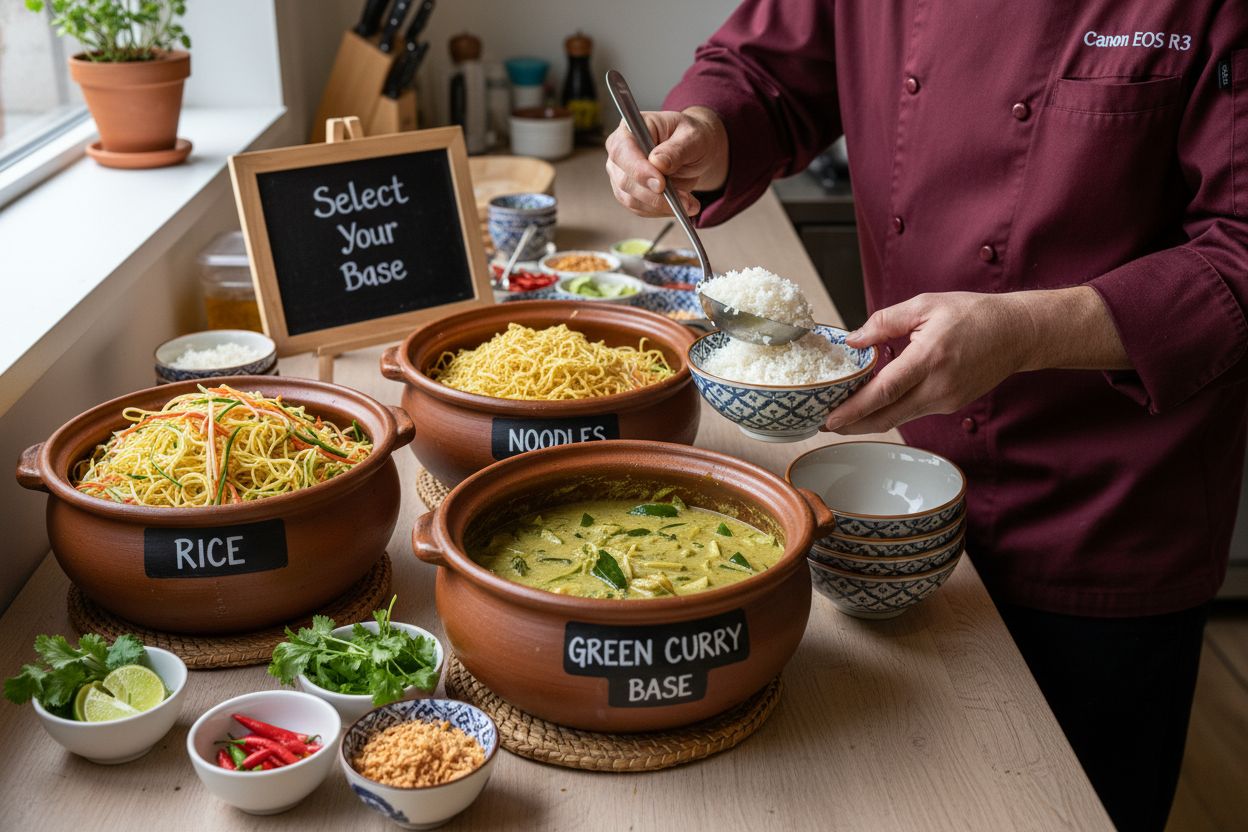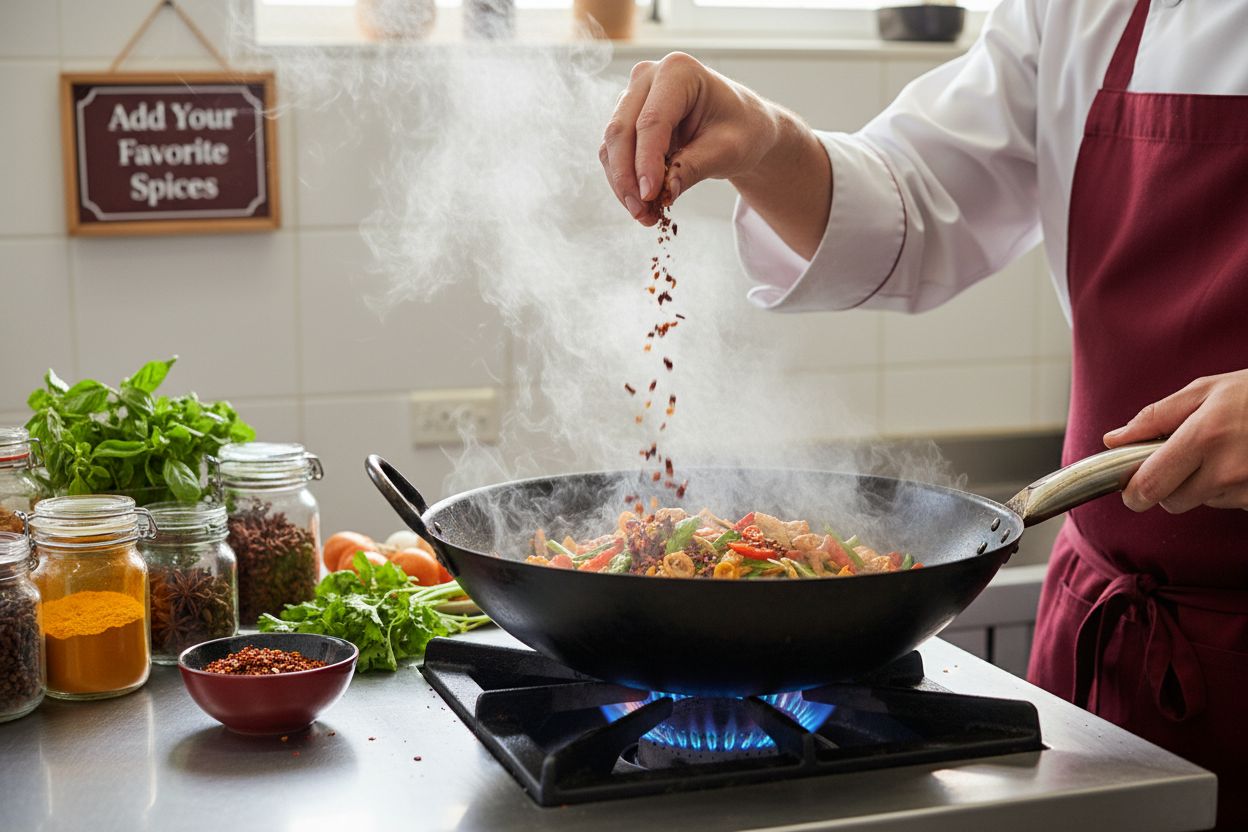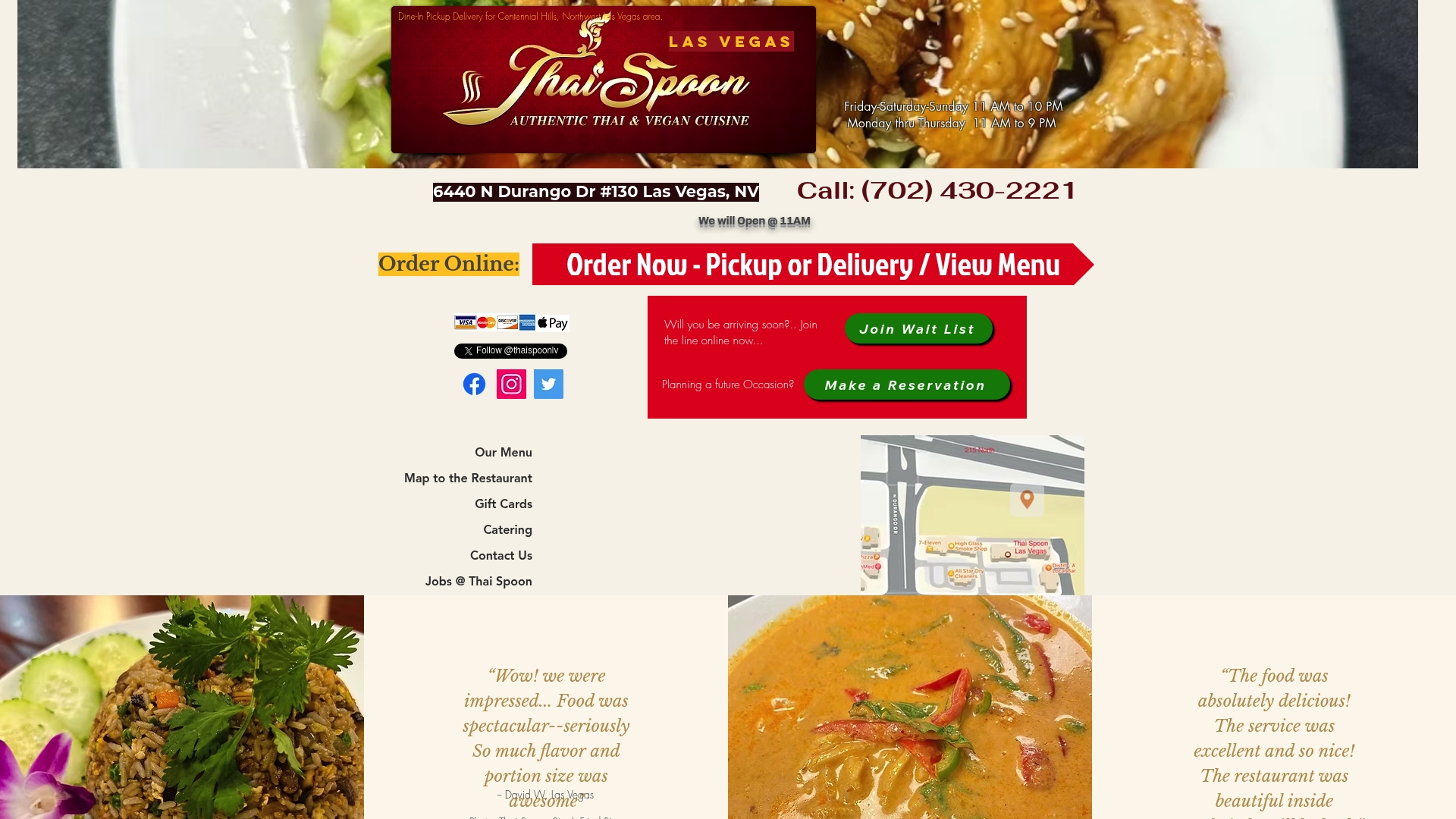How to Customize Thai Meals: A Complete Guide
- mail469793
- Oct 13
- 11 min read

Building your own custom Thai meal goes way beyond picking a dish off the menu. Most people just order Pad Thai or curry and call it a day, but it turns out there are dozens of ways to personalize every layer of your meal—from the base, to the protein, all the way to the final herbs and sauces. What surprises most folks is just how easy it is to create a meal that fits your own taste and diet, and still get that signature bold Thai flavor every time.
Table of Contents
Quick Summary
Key Point | Explanation |
1. Choose a Customizable Base Dish | Start your meal by selecting a base dish like Pad Thai or curry that suits your preferences and dietary needs. |
2. Select Proteins and Vegetables | Opt for proteins like chicken or tofu, and fresh vegetables to create a dish that reflects your tastes and nutritional goals. |
3. Adjust Spice Levels | Enhance your meal’s flavor by selecting spices and condiments that suit your desired heat and taste profile. |
4. Pick Appropriate Cooking Methods | Choose cooking techniques such as stir-frying or steaming to impact the dish’s texture and flavor intensity. |
5. Review and Fine-tune Seasoning | Before serving, taste and adjust flavors for sweetness, sourness, and heat to create a personalized dining experience. |
Step 1: Select Your Base Dish for Customization
Customizing Thai meals starts with selecting the perfect base dish that will serve as the foundation for your culinary adventure. This initial step is crucial because the base determines the overall texture, flavor profile, and cooking technique that will transform your meal into a personalized Thai dining experience.
Understanding Base Dish Options
At Thai Spoon Las Vegas, you have multiple base dishes that provide an excellent starting point for customization. Traditional Thai cuisine offers several core options that can accommodate different preferences and dietary needs. Rice-based dishes like Pad Thai, Stir Fried Noodles, and Fried Rice provide versatile platforms for creating your unique meal. Alternatively, curry-based dishes such as Yellow Curry, Green Curry, and Massaman Curry offer rich, complex flavor foundations that can be tailored to individual tastes.
When selecting your base dish, consider your protein preference and desired spice level. Some diners prefer protein-rich options like chicken, beef, or tofu, while others might opt for seafood selections like shrimp or fish. Each protein interacts differently with various sauces and spices, creating distinct flavor experiences.
Matching Base to Personal Preference
Consider your comfort level with Thai cuisine when choosing your base dish. For those new to Thai food, milder options like Pad Thai or Chicken Fried Rice provide an approachable entry point. More adventurous eaters might select spicier curries or noodle dishes that showcase bold, intricate flavor combinations. Vegetarian and gluten-free diners will find multiple options that can be easily customized to meet their dietary requirements.
Remember that each base dish offers a unique canvas for your culinary creativity. By understanding the characteristics of different Thai dishes, you can make an informed selection that sets the stage for a truly personalized meal experience.
Below is a table comparing popular Thai base dishes to help you select the one that best fits your flavor and dietary preferences.
Base Dish | Typical Texture | Flavor Profile | Good for Dietary Needs |
Pad Thai | Chewy noodles | Sweet, savory | Mild, gluten-free (with rice noodles) |
Stir Fried Noodles | Soft, slightly crisp | Savory, umami | Flexible for protein/veggie choices |
Fried Rice | Fluffy, slightly firm | Savory, mild | Vegetarian and gluten-free options |
Yellow Curry | Creamy, smooth | Mild, aromatic | Vegetarian and vegan friendly |
Green Curry | Creamy, thin | Spicy, herbal | Dairy-free, gluten-free, customizable |
Massaman Curry | Thick, hearty | Sweet, nutty | Good for meat lovers or vegetarians |

Step 2: Choose Your Preferred Proteins and Vegetables
After selecting your base dish, the next critical step in customizing your Thai meal involves choosing proteins and vegetables that will elevate your culinary experience. This stage transforms a standard dish into a personalized creation that reflects your taste preferences and nutritional needs.
Protein Selection Strategies
At Thai Spoon Las Vegas, you have multiple protein options that can dramatically change the character of your dish. Traditional Thai cuisine offers an impressive range including chicken, beef, shrimp, tofu, and fish. Each protein brings unique textures and flavor profiles to your meal. Chicken provides a lean, versatile option that absorbs spices beautifully, while beef offers a richer, more robust taste. Seafood lovers can opt for succulent shrimp or delicate fish selections that complement lighter sauces.
For vegetarian and plant-based diners, tofu serves as an excellent protein alternative. The chefs at Thai Spoon can prepare tofu in multiple styles - crispy, soft, or medium - allowing you to customize not just the protein but its preparation method. Vegetable proteins like tempeh and seitan are also available for those seeking diverse meat alternatives.
Vegetable Customization
Vegetables are where true personalization happens. Thai cuisine celebrates fresh, vibrant produce that adds nutrition and complexity to every dish. Classic vegetables like bell peppers, broccoli, carrots, and bamboo shoots offer different textures and flavors. More adventurous diners might select Thai eggplant, morning glory, or Thai basil to create a more authentic experience.
Consider your dietary preferences and nutritional goals when selecting vegetables. Some diners might prioritize high-fiber options like broccoli, while others might seek out vegetables with specific nutritional benefits. The beauty of customizing your Thai meal lies in the ability to create a dish that is not just delicious but also aligned with your personal health objectives.
Here is a table summarizing the core protein and vegetable options and their characteristics to help you create the perfect custom Thai meal.
Ingredient | Type | Key Traits | Best For |
Chicken | Protein | Lean, absorbs flavors | Versatile dishes |
Beef | Protein | Rich, robust flavor | Hearty curries/stir-fry |
Shrimp | Protein | Light, sweet | Mild curries, stir-fry |
Tofu | Protein | Plant-based, adaptable | Vegetarian, vegan |
Bell Peppers | Vegetable | Crunchy, colorful | Texture and color |
Broccoli | Vegetable | High-fiber, crisp | Nutritional boost |
Thai Basil | Vegetable | Fragrant, herbal | Authentic Thai flavor |
Pro tip: Don’t hesitate to mix and match proteins and vegetables. The chefs at Thai Spoon are skilled at accommodating unique combinations, ensuring your personalized meal meets both your taste and dietary requirements.
Step 3: Add Your Favorite Spices and Flavor Enhancers
Spices and flavor enhancers are the secret weapons that transform a standard Thai dish into a personalized culinary masterpiece. This step allows you to dial up intensity, balance flavors, and create a meal that speaks directly to your taste preferences. Discover the nuanced world of Thai spices and learn how to craft a truly unique dining experience.
Understanding Flavor Complexity
Traditional Thai cuisine celebrates a delicate balance of sweet, sour, salty, bitter, and spicy flavor profiles. At Thai Spoon Las Vegas, chefs understand that customization means providing multiple flavor enhancement options. Chili pastes like nam prik pao offer deep, smoky heat, while fresh herbs such as Thai basil and cilantro introduce bright, aromatic notes. Sophisticated diners can experiment with condiments like fish sauce, which adds umami depth, or lime juice for a sharp, citrusy brightness.
Spice levels represent another crucial customization opportunity. Some guests prefer mild warmth, while others seek mouth-tingling intensity. The kitchen can adjust spiciness using ingredients like fresh Thai chilies, dried chili flakes, or green and red chili sauces. These additions allow precise control over heat intensity, ensuring your meal matches your exact preferences.
Strategic Flavor Layering
Advanced customization involves strategic flavor layering. This means thoughtfully combining spices and enhancers to create complex taste experiences. Consider how different herbs and spices interact with your chosen base dish and protein. A coconut curry might welcome warming spices like cumin and coriander, while a stir-fry could benefit from lemongrass and ginger. Each addition transforms the dish, creating a personalized culinary signature.
According to research from the National Institutes of Health, herbs and spices not only enhance flavor but also offer significant nutritional benefits. Fresh herbs like basil and cilantro provide antioxidants, while spices such as turmeric offer anti-inflammatory properties. By customizing your meal, you’re not just creating a delicious dish but potentially boosting your dietary wellness.
Pro tip: Start with small additions and taste frequently. The goal is to enhance, not overpower, the fundamental flavors of your chosen Thai dish.

Step 4: Determine the Cooking Method for Your Meal
Choosing the right cooking method is a pivotal moment in customizing your Thai meal, as it significantly impacts texture, flavor intensity, and overall dining experience. This step allows you to fine-tune how your carefully selected ingredients will be transformed into a delectable dish that matches your exact culinary vision.
Traditional Thai Cooking Techniques
Thai cuisine offers a rich array of cooking methods that can dramatically alter your meal’s character. Stir-frying remains the most popular technique, delivering quick, high-heat cooking that preserves vegetable crispness and creates beautiful caramelization. Wok-based stir-fries allow ingredients to retain their individual flavors while developing a harmonious blend. For those seeking a lighter preparation, steaming provides a healthier alternative that maintains ingredient nutrients and delicate flavor profiles.
For diners craving deeper flavor development, braising and simmering techniques offer complex taste experiences. These methods allow spices and proteins to slowly meld, creating rich, deeply layered dishes like Massaman curry or slow-cooked beef. The extended cooking time enables ingredients to absorb maximum flavor, resulting in tender proteins and intensely seasoned sauces.
Customization Through Cooking Techniques
Your chosen cooking method directly influences the final dish’s texture and taste. Crispy stir-fried dishes provide a different experience compared to gently simmered curries. At Thai Spoon Las Vegas, chefs understand that cooking technique is more than a preparation step - it’s an essential aspect of meal customization. Learn more about traditional Thai cooking methods to appreciate the nuanced art behind each preparation style.
According to researchers studying culinary techniques, cooking methods can significantly impact ingredient nutrient retention and flavor development. High-heat techniques like stir-frying preserve more vitamins and minerals compared to prolonged cooking methods, offering both culinary and nutritional benefits.
Pro tip: Consider your protein and vegetable selections when choosing a cooking method. Delicate seafood might require gentler techniques, while heartier proteins can withstand more aggressive cooking approaches. The goal is to create a harmonious balance that highlights each ingredient’s unique qualities.
This table outlines the main Thai cooking methods available and highlights how each technique affects ingredient texture and flavor intensity.
Cooking Method | Texture Produced | Flavor Impact | Best For |
Stir-frying | Crisp, caramelized | Quick, high-heat, bold | Vegetables, thin meats |
Steaming | Tender, moist | Gentle, subtle flavors | Seafood, delicate vegetables |
Braising | Tender, infused | Deep, complex flavors | Beef, chicken, curries |
Simmering | Soft, melded | Harmonious, layered | Soups, curries |
Step 5: Review and Adjust Seasoning Before Serving
The final stage of customizing your Thai meal involves a critical tasting and seasoning adjustment process that transforms a good dish into an extraordinary culinary experience. This step allows you to fine-tune flavors, balance ingredients, and ensure the meal perfectly matches your individual taste preferences.
Fundamental Flavor Balancing
Traditional Thai cuisine celebrates a complex interplay of sweet, sour, salty, bitter, and spicy flavor profiles. When reviewing your dish, taste carefully and assess whether these elements are harmoniously represented. A truly customized meal requires careful attention to subtle flavor nuances. Saltiness can be adjusted with fish sauce, sourness with lime juice, sweetness with palm sugar, and heat with fresh or dried chilies.
The art of seasoning adjustment involves making incremental changes. Start by adding small amounts of condiments and tasting frequently. At Thai Spoon Las Vegas, chefs recommend using a clean spoon for each tasting to maintain flavor accuracy. A pinch of fresh herbs like Thai basil or a splash of lime can dramatically transform a dish’s final flavor profile, adding brightness and complexity.
Strategic Seasoning Techniques
According to research examining Thai culinary practices, personalized seasoning is fundamental to authentic Thai dining experiences. This means understanding how different ingredients interact and being willing to make real-time adjustments. Explore more about Thai spice techniques to deepen your understanding of flavor customization.
Consider the temperature and presentation of your dish during final seasoning. Some flavor enhancers perform differently when hot versus slightly cooled. Certain herbs might lose potency if added too early, while others develop more complex notes with brief cooking. Professional chefs often reserve delicate finishing touches like fresh cilantro or a final squeeze of lime until just before serving.
Pro tip: Trust your palate and be confident in making personalized adjustments. The goal is creating a meal that delights your individual taste preferences, transforming a standard dish into a culinary masterpiece uniquely tailored to your sensory expectations.
Ready to Personalize Your Thai Meal at Thai Spoon Las Vegas?
If you have ever been frustrated by menus that do not offer full customization or if you simply want to create the perfect Thai meal that suits your taste or dietary needs, you are not alone. The article “How to Customize Thai Meals: A Complete Guide” showed that choosing the right base, protein, spice level, and cooking style is essential for a dish that matches your unique preferences. This is exactly what Thai Spoon Las Vegas offers its guests, whether you are seeking an authentic Pad Thai or a vegan Yellow Curry personalized just for you.

Explore our diverse menu and see how easy it is to turn your culinary vision into reality. We offer fresh ingredients, a variety of proteins and vegetables, and flexible spice options all prepared to order. You can quickly order your personalized Thai meal online, schedule convenient pickup or delivery, or plan a dine-in visit with friends. Do not settle for the ordinary when your perfect Thai dish is just a click away. Visit Thai Spoon Las Vegas now to experience Thai food exactly the way you want it.
Frequently Asked Questions
How do I choose the right base dish for my customized Thai meal?
To select the right base dish, consider options like Pad Thai, Fried Rice, or various curries. Determine your preferred flavor profile and texture, then pick a dish that matches those preferences, such as choosing Pad Thai for a milder experience or a spicy Green Curry for something bolder.
What protein options can I include when customizing my Thai meal?
Protein options include chicken, beef, shrimp, tofu, and fish. Choose a protein that complements your base dish and aligns with your dietary goals, for example, opting for tofu if you prefer a vegetarian meal or shrimp for a lighter seafood option.
How can I adjust the spice level in my customized Thai dish?
You can adjust the spice level by adding fresh Thai chilies, dried chili flakes, or chili sauces to your dish. Start with a small amount and taste your meal frequently, allowing you to find the perfect balance of heat to match your preference.
What vegetables should I choose for my customized Thai meal?
Select vegetables like bell peppers, broccoli, or carrots for a classic touch, or try Thai eggplant and morning glory for a more authentic experience. Aim to mix a variety of textures and colors, such as pairing crunchy bell peppers with tender broccoli, to enhance both nutrition and visual appeal.
How do I decide on the cooking method for my Thai meal?
Deciding on a cooking method involves considering your protein and vegetable selections. For example, if you choose shrimp, steaming may be best to preserve flavor, while beef can be stir-fried for a crispy texture, ensuring the cooking method complements your dish’s overall profile.
What should I do to finalize the seasoning of my customized Thai dish?
To finalize the seasoning, taste your dish and make adjustments using ingredients like fish sauce for saltiness or lime juice for sourness. Start by adding small quantities and taste continuously until you achieve a balanced flavor profile that suits your palate.
Recommended











Comments